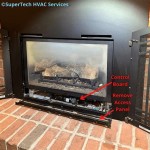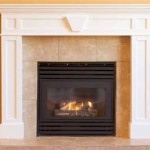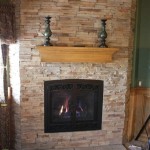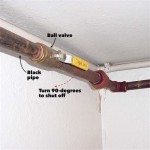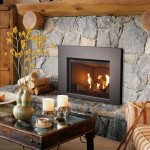Understanding Heatilator Fireplace Parts: A Comprehensive Guide
Heatilator fireplaces, known for their durability and efficiency, have been a staple in homes for decades. Maintaining these fireplaces requires understanding their components and knowing where to source replacement parts. This article provides a comprehensive overview of common Heatilator fireplace parts, their functions, and factors to consider when replacing them.
Identifying Your Fireplace Model
Before ordering any parts, it is crucial to identify the exact model of your Heatilator fireplace. This information ensures compatibility and prevents the purchase of incorrect components. The model number is typically located on a metal plate or sticker affixed to the fireplace. Common locations include:
*Inside the firebox, often on the side or back wall.
*On the control panel or near the gas valve (for gas models).
*Behind the access panel below the fireplace.
Once you have located the model number, record it carefully. This number will be essential when searching for replacement parts from retailers or manufacturers.
Key Components of a Heatilator Fireplace
Heatilator fireplaces, depending on their type (gas, wood, or electric), consist of various components. Understanding each component's function is essential for proper maintenance and repair.
Gas Fireplace Components
Gas fireplaces utilize natural gas or propane to generate heat. Key components include:
*Gas Valve: This critical component controls the flow of gas to the burner. It is often a combination gas valve, regulating gas pressure and providing safety shut-off features. Replacement requires careful attention to gas line connections and pressure settings.
*Burner: The burner is where the gas mixes with air and combusts, creating the flames. Burners can be made of various materials, including cast iron or stainless steel, and often require cleaning or replacement due to corrosion or clogging.
*Thermocouple or Thermopile: These devices generate a small electrical current that keeps the gas valve open after the pilot light is lit. A faulty thermocouple or thermopile will prevent the fireplace from staying lit.
*Pilot Assembly: The pilot assembly includes the pilot burner, igniter, and flame sensor. It provides the initial flame that ignites the main burner. A clogged pilot orifice or a malfunctioning igniter can prevent the pilot light from staying lit.
*Igniter: Gas fireplaces frequently use electronic igniters to start the pilot light. A failing igniter will prevent the fireplace from starting.
*Log Set: While primarily aesthetic, gas logs play a crucial role in radiating heat. Different log sets are designed for specific burner configurations and fireplace models.
*Glass Door: The glass door provides a barrier between the fire and the room, and in some cases adds to the efficiency and appearance of the fireplace. Damaged or cracked glass doors should be replaced immediately for safety.
*Control Module: More modern gas fireplaces might incorporate electronic control modules that manage functions such as flame height, blower speed and remote control capability.
Wood Burning Fireplace Components
Wood-burning fireplaces rely on the combustion of wood to generate heat. Key components include:
*Firebox: The firebox is the chamber where the fire is built. It is typically made of firebrick or cast iron, designed to withstand high temperatures. Cracked or damaged firebricks need to be replaced to prevent heat loss and structural damage.
*Grate: The grate elevates the firewood, allowing air to circulate and promote efficient burning. Grates can warp or break with extended use and require replacement.
*Damper: The damper controls the airflow through the chimney. It is essential for starting and maintaining a fire and for preventing drafts when the fireplace is not in use. A damaged damper can lead to inefficient burning or smoke entering the room.
*Smoke Shelf: The smoke shelf is a horizontal surface located above the firebox that helps deflect downdrafts and prevent smoke from entering the room.
*Chimney Liner: The chimney liner is a protective layer inside the chimney that prevents corrosive byproducts of combustion from damaging the chimney structure. Damaged or deteriorated chimney liners present a significant safety hazard and should be professionally repaired or replaced.
Electric Fireplace Components
Electric fireplaces simulate the appearance of a real fire using electric heating elements and visual effects. Key components include:
*Heating Element: The heating element generates heat. Malfunctions require replacement of the entire heating assembly.
*Fan/Blower: The fan or blower circulates warm air into the room. A malfunctioning fan can reduce the fireplace's heating efficiency.
*Light Bulbs/LEDs: These components create the flickering flame effect. Replacing burned-out bulbs or LEDs is typically a straightforward process.
*Control Panel: The control panel allows users to adjust the heat settings, flame effects, and other features. A faulty control panel may require professional repair or replacement.
*Motor: A small motor moves the reflective components to create a realistic flame effect.
Factors to Consider When Replacing Fireplace Parts
Replacing fireplace parts requires careful consideration to ensure safety and proper functionality. Several factors influence the replacement process:
Compatibility
The most crucial factor is compatibility. Always ensure that the replacement part is designed specifically for your Heatilator fireplace model. Using incompatible parts can lead to malfunction, safety hazards, and voiding of warranties.
Material Quality
Opt for replacement parts made from high-quality materials. Durable materials extend the lifespan of the replacement and ensure reliable performance. For example, stainless steel burners resist corrosion better than cheaper alternatives.
Safety Standards
Ensure that replacement parts meet relevant safety standards and certifications. This is especially critical for gas fireplace components, where safety is paramount. Look for parts that are certified by organizations like UL (Underwriters Laboratories) or CSA (Canadian Standards Association).
Professional Installation
While some fireplace repairs are straightforward, others require professional installation. Complex components, such as gas valves and chimney liners, should be installed by qualified technicians. Improper installation can lead to gas leaks, fire hazards, or carbon monoxide poisoning.
Warranty
Check the warranty offered on the replacement part. A warranty provides protection against defects in materials or workmanship. Consider parts with longer warranties, as they often indicate higher quality and greater manufacturer confidence.
Common Heatilator Fireplace Part Issues and Solutions
Several common issues can arise with Heatilator fireplaces, often requiring the replacement of specific parts.
Gas Fireplace Pilot Light Problems
A pilot light that frequently goes out or refuses to light is a common problem. Solutions include:
*Replacing the Thermocouple or Thermopile: A faulty thermocouple or thermopile is a common cause of pilot light problems.
*Cleaning the Pilot Orifice: A clogged pilot orifice can restrict gas flow and prevent the pilot light from staying lit. Use a small needle or compressed air to clean the orifice carefully.
*Checking the Gas Valve: A malfunctioning gas valve can prevent gas from reaching the pilot. If the gas valve is faulty, it needs to be replaced by a qualified technician.
Wood-Burning Fireplace Smoke Problems
Smoke entering the room while the fireplace is in use can be caused by several factors:
*Damper Issues: Ensure the damper is fully open. A partially closed or damaged damper can restrict airflow and cause smoke to back up into the room. Repair or replace the damper if necessary.
*Chimney Blockage: A blocked chimney can prevent smoke from escaping. Have the chimney professionally inspected and cleaned to remove any obstructions, such as creosote buildup or animal nests.
*Inadequate Draft: Insufficient draft can lead to smoke problems. Ensuring a proper chimney height and insulation can improve draft. A downdraft can sometimes be solved with a special chimney cap.
Electric Fireplace Heating Issues
An electric fireplace that is not producing sufficient heat may have the following issues:
*Heating Element Failure: A burned-out heating element will require replacement. Typically, the entire heating assembly needs to be replaced.
*Blower Malfunction: A malfunctioning blower can reduce the circulation of warm air. Check the blower motor for obstructions or damage. Replace the blower if necessary.
*Control Panel Problems: A faulty control panel may prevent the fireplace from reaching the desired heat setting. Consult a qualified technician to diagnose and repair the control panel.
Locating Heatilator Fireplace Parts
Several sources offer Heatilator fireplace parts. These include:
*Authorized Dealers: Authorized Heatilator dealers offer genuine replacement parts and expert advice. They can assist with finding the correct parts for your specific model.
*Online Retailers: Numerous online retailers specialize in fireplace parts. Ensure that the retailers are reputable and offer genuine Heatilator parts.
*HVAC Supply Stores: Local HVAC supply stores may carry some common Heatilator fireplace parts, especially for gas models.
When purchasing parts online, carefully review the product description and specifications to ensure compatibility. Compare prices from different vendors to find the best deal. Always prioritize quality and safety over cost.

Update Your Heatilator Mark 123 Fireplace In No Time

Heatilator Accelerator Wood Fireplace Hearth And Home Distributors Of Utah Llc

Heatilator Fireplaces Canadian Home Inspection Services

Heatilator Fireplace Brochure Manuals Guides Parts Fans

Heatilator Sc60 Wood Fireplace Hearth And Home Distributors Of Utah Llc

Heatilator Sc60 Wood Fireplace Hearth And Home Distributors Of Utah Llc

Sinopts Heatilator Gas Fireplace Parts China Flame Failure Device Supervision Made In Com

Silh50e B Silhouette 31 Electric Fireplace Heatilatorparts Com

Heatilator Hb36a Refractory Bricks Post 25 92 17180a 17177b 17174b

Installing A Fireplace Blower Gfk4 Gfk4a In Heatilator Natural Gas
Related Posts



